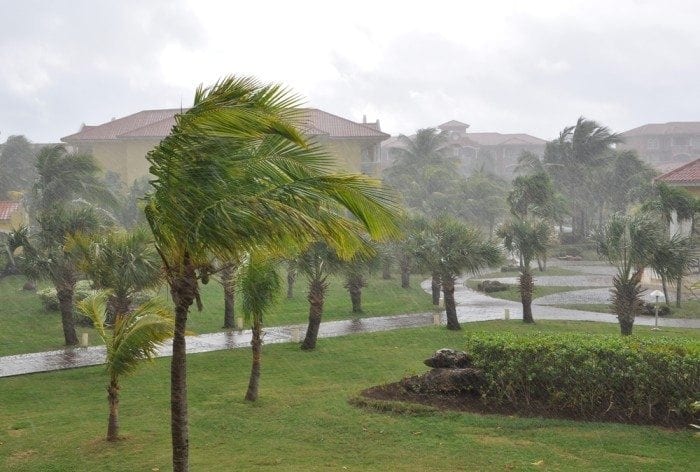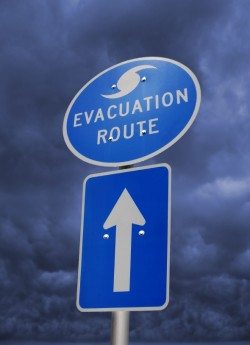8 Tips for Hurricane Preparedness if You’re Blind
Hurricane Preparedness for People With Visual Disabilities
The Atlantic Hurricane Season runs from June until the end of November. While there are months where hurricanes are at their peak, Mother Nature doesn’t always follow the calendar.

Just like it is for anyone, Hurricane Season can be a stressful time for people living with visual disabilities. Knowing what to do and being prepared can make all the difference during natural disasters.
8 Tips for Hurricane Preparedness if You’re Blind
- Create a plan. Having a strategy should be your first priority. This may include evacuation routes, family plans, emergency contact information, and a list of essential items to take with you in the event of an evacuation. Plan all this well in advance of an emergency.
- Have copies of your most important documentation. Keep them safe in water-tight containers or ziploc bags. Some documents you may want to include are medical prescriptions and records, social security cards, birth certificates, passports, military IDs, mortgage documents, and even proof of your current address. Just remember to keep these copies safe and secure at all times, including when it’s not Hurricane Season.
- Add braille labels to evacuation items. This can help you stay organized and allows you to find something quickly on your own. Add braille labels to items such as important documents or supplies for a Hurricane Kit.
- Have a network of neighbors, friends, and family who can help. These people can alert you to emergencies and evacuation orders when you’re not aware of them. Having someone provide a warning call can give you precious extra time to get out and stay safe. People in your network should also know how to contact you after the emergency is over.
- Keep the car’s gas tank full. You never know when disaster will strike. During Hurricane Season, be vigilant about how often you and your family fill the car with gas. Having a full tank of gas means having one less worry during a stressful situation. You may not be driving the car, but you feel just as responsible for its passengers.
- Keep a Hurricane Kit or Go-Bag in the car. We’ve provided an example of what we’d pack below. Agencies like the Federal Emergency Management Agency and the Red Cross suggest packing enough supplies for you and your family to survive for three days after a disaster.
- Pack extra assistive devices. If there are any assistive devices that you absolutely can’t live without, like a white cane, make sure to have extra. In this situation, it’s better to overpack than risk going without a crucial aid.
- Accessible Cash. Set aside and mark or label money that you can use during an emergency. Credit and debit cards might not work, especially if the power is out. Having money set aside means not having to rely on someone to tell you what denomination a bill is, and it will also give you peace of mind.
Hurricane Kit for People with Visual Disabilities
- A braille label maker to help identify items easily
- Label as much as you can ahead of time, including items on this list
- Extra assistive devices, like a white cane
- Three gallons of water per person
- Enough non-perishable food for each person for three days
- Canned, ready-to-eat food, like tuna and soup
- Crackers
- Cereal
- Bread
- Granola
- Nuts
- Peanut butter
- Juice boxes
- Favorite snacks like chips or candy
- Manual can opener
- Toiletries
- Extra clothes
- Rain gear, such as a jacket, hat, umbrella, and rain boots
- Portable power banks
- Charging cables for phones and any other electronic devices
- Weather radio
- Flashlight
- First Aid kit
- Extra batteries for all of your devices

Community Resources
State and Local governments typically have emergency evacuation plans in place for their jurisdiction. You can ask your local Department of Transportation if they have an evacuation plan that accommodates people with disabilities. Their plan should include information in accessible formats, such as braille or an accessible PDF.
First responders can assist with creating a voluntary registry of people with disabilities. This would give the first responders the ability to contact or help residents during emergencies. You can also talk to your community emergency management agency about any disability-related concerns you may have. This includes asking about plans before, during, and after a disaster.
A Special Note for Pets
If you have a guide dog or other service animal, please consider their needs during an emergency, too. Packing food, water, and even toys for your service animal will help them “weather the storm” better. If you are evacuating to a shelter or another safe location, include a secure crate, leash, or carrier for your pets.
It may help to inform your planned evacuation shelter that you have a service animal. Check the website of your local emergency management office for information on planning for emergencies with your service animal. After all, these fuzzy friends are in tune with you, and chances are, you’re also very close to them.
You can get additional information on hurricane preparation for pets from Dogs Inc.
Communication is Key During Hurricanes
Communication is crucial before, during, and even after a hurricane. It’s important to stay in touch with your loved ones and keep yourself informed.


